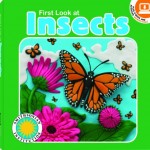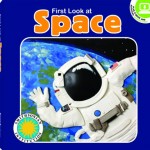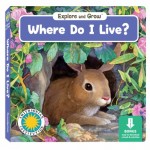I joined the staff in the Smithsonian’s Department of Entomology, National Museum of Natural History in 1992, at the time Pam Henson and I published “Digging for Dyar: The Man Behind the Myth”. Having stayed in Washington, DC long enough to complete the article, my job at the Museum would give me roughly a dozen years to accumulate information on Dyar, while performing other duties.
The post A Flame as a Moth: How I began chronicling the life of Harrison G. Dyar, Jr., Part 2 appeared first on OUPblog.
I first became acquainted with Dyar’s work on the moth family Limacodidae, my chosen entomology dissertation topic, in 1983 at the University of Minnesota. It was in the Hodson Hall library on the St. Paul campus where I noted how Dyar’s authorship dominated the Journal of the New York Entomological Society in the middle to late 1890s. Particularly notable was his running series from 1895-1899
The post A flame as a moth: how I began chronicling the life of Harrison G. Dyar, Jr., Part 1 appeared first on OUPblog.
Enter to win a set of Smithsonian Everything You Need to Know fact cards!
Giveaway begins July 1, 2015, at 12:01 A.M. PST and ends July 31, 2015, at 11:59 P.M. PST.
These books, guides, and cards offer interesting trivia and facts, engaging formats, and lively illustrations; a perfect combination to pique interest for hours of casual reading, followed by days of reciting trivia, and hopefully, years of knowledge about these important people in American history.
By Nina Schuyler, The Children’s Book Review
Published: May 21, 2012
 After reading so many books with talking bunnies and dogs, of mice that look cuddly and sweet, of mischievous cats and raccoons, it’s a relief, of sorts, to enter the world of realism, especially one that has the stamp of the prestigious Smithsonian Institution. The realism comes if not through the photographs, then through the information.
After reading so many books with talking bunnies and dogs, of mice that look cuddly and sweet, of mischievous cats and raccoons, it’s a relief, of sorts, to enter the world of realism, especially one that has the stamp of the prestigious Smithsonian Institution. The realism comes if not through the photographs, then through the information.
 In the “First Look” series of board books, published by Soundprints, you find out in “First Look at Insects,” that the praying mantis uses her long back legs to catch a snack and that a dragonfly can fly forward, sideways, and even backward. In “First Look at Space,” you get to learn about the solar system, the sun and the Milky Way. And in “First Look at Dinosaurs,” you begin the long journey of learning the correct pronunciation of dinosaurs, in addition to finding out about the dinosaurs’ myriad defense apparatuses—horns, club tails and big teeth. With the purchase of these books, you’re entitled to download an e-book and also printable activities, such as making your own insect out of an egg carton or creating your own bug dessert with chocolate pudding.
In the “First Look” series of board books, published by Soundprints, you find out in “First Look at Insects,” that the praying mantis uses her long back legs to catch a snack and that a dragonfly can fly forward, sideways, and even backward. In “First Look at Space,” you get to learn about the solar system, the sun and the Milky Way. And in “First Look at Dinosaurs,” you begin the long journey of learning the correct pronunciation of dinosaurs, in addition to finding out about the dinosaurs’ myriad defense apparatuses—horns, club tails and big teeth. With the purchase of these books, you’re entitled to download an e-book and also printable activities, such as making your own insect out of an egg carton or creating your own bug dessert with chocolate pudding.
 In the “Baby Animals” series, published by Soundprints, you are treated to wonderful photographs of different animals—in “Baby Penguin Waddles,” “Lion Cub Roars,” and “Fawn and her Family,” the sentences are simple and relate to the photograph. These books, too, come with activities and e-books to download.
In the “Baby Animals” series, published by Soundprints, you are treated to wonderful photographs of different animals—in “Baby Penguin Waddles,” “Lion Cub Roars,” and “Fawn and her Family,” the sentences are simple and relate to the photograph. These books, too, come with activities and e-books to download.
 In “Where Do I Live?” you get to play a guessing game. The animal gives you clues, quietly slipping in facts about itself in a rhyme scheme, and you guess the name of its home. For instance, “I am a bumblebee, striped all over. I bring nectar home from a patch of clover. Worker bees live in my home, and it is filled with honeycomb. Where do I live?” Turn the page. “A hive!”
In “Where Do I Live?” you get to play a guessing game. The animal gives you clues, quietly slipping in facts about itself in a rhyme scheme, and you guess the name of its home. For instance, “I am a bumblebee, striped all over. I bring nectar home from a patch of clover. Worker bees live in my home, and it is filled with honeycomb. Where do I live?” Turn the page. “A hive!”
These series are a nice addition to remind you and your little one that these animals, in fact, exist

Most everyone who works in libraries has a fond memory involving the bookmobile. I never visited one as a child, but I worked on one as part of my first job in a children’s room…and I loved every second of it. For some kids, it was their first exposure to a library at all and, for others, it was a novel way to enjoy the rights and privileges that they had already discovered at their local branch.
The memories of my time on the bookmobile came back to me fresh and fast when I read MISS DOROTHY AND HER BOOKMOBILE by Gloria Houston and illustrated by Susan Condie Lamb. It’s a lovely read that captures the history of the bookmobile in the U.S. and serves as another way to delight young kids about this library branch on wheels.
Did you know it’s National Bookmobile Day on April 13, 2011? MISS DOROTHY AND HER BOOKMOBILE is a wonderful way to celebrate and remind us all that we can and should get creative with the services we offer to children and their families. And don’t forget to “like” National Bookmobile Day @ Your Library on Facebook. You can also read the Smithsonian’s recent article about bookmobiles, “Long Overdue, the Bookmobile is Back” by Jeff Greenwald.
 Okay, so I know you’re going to say I’m biased, but I’m a huge fan of Seymour Simon. As a librarian, I was always comfortable recommending his books - he was one of my reliables, an absolute go-to. Recently, I’ve had opportunities to work with him and, I have to confess, he’d have a lot of us beat in the pop culture and technology departments: Seymour knows more about Idol than I ever would and has all the latest gadgets that I’m still slightly scared of.
Okay, so I know you’re going to say I’m biased, but I’m a huge fan of Seymour Simon. As a librarian, I was always comfortable recommending his books - he was one of my reliables, an absolute go-to. Recently, I’ve had opportunities to work with him and, I have to confess, he’d have a lot of us beat in the pop culture and technology departments: Seymour knows more about Idol than I ever would and has all the latest gadgets that I’m still slightly scared of.
With that in mind, you have to check out Seymour Simon’s website and blog. Here is just a glimpse of the coolness you’ll find there:
Want to meet Seymour in person? The correct answer, of course, is yes. He’ll be at the National Science Teachers Association (NSTA) conference in San Francisco this coming weekend! On Friday, March 11th, from 3:30 pm – 5:30 pm, he’ll be accepting his award for the NSTA Outstanding Science Trade Books for Students K-12 – listen to him speak about GLOBAL WARMING. On Saturday, March 12th, he’ll be on a panel, “Science with Seymour Simon and Wendy Saul: Developing the Language of Science”, from 5:00 pm – 6:00 pm at the Moscone Center, Room 262 on Saturday. Stop by and say hi to Seymour!

Photo courtesy of the Smithsonian Institute
My daughter’s 4th grade class is celebrating Black History Month in the most wonderful way by creating a version of Kente cloth. While it’s traditionally made with silk and cotton interweaving threads, her class used pens, paints, and colored pencils to create theirs.
Kente cloth is believed to have originated from the Akan people in West Africa*. The designs are traditionally bright, geometric, and bold. Additionally, the colors and shapes are usually symbolic of historic events, family trees, the seasons, and proverbs. (The Smithsonian Institute has wonderful information online about their “Ghanaian Kente and African American Identity” exhibition)
Making Kente cloths in your library is just one of many ideas to celebrate Black History Month. Texas Library Club has a wonderful list of books, songs, and activities – including a way of making Kente cloths by weaving strips of paper together.
We’d also love to recommend these books for your Black History Month displays:
And you can also download our Black History Month Classroom Kit.
What are you doing at your library to celebrate Black History Month? We’d love to hear your ideas (or even photos of any displays you’ve created)!
* As a former librarian, I have to share this disclaimer: I got my information from Wikipedia.
Earth Hour is on March 27—that's tomorrow—at 8:30pm (local time). Here are a couple of book suggestions that make the hot-topic of climate change, kid friendly:









